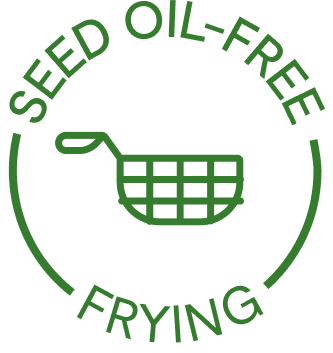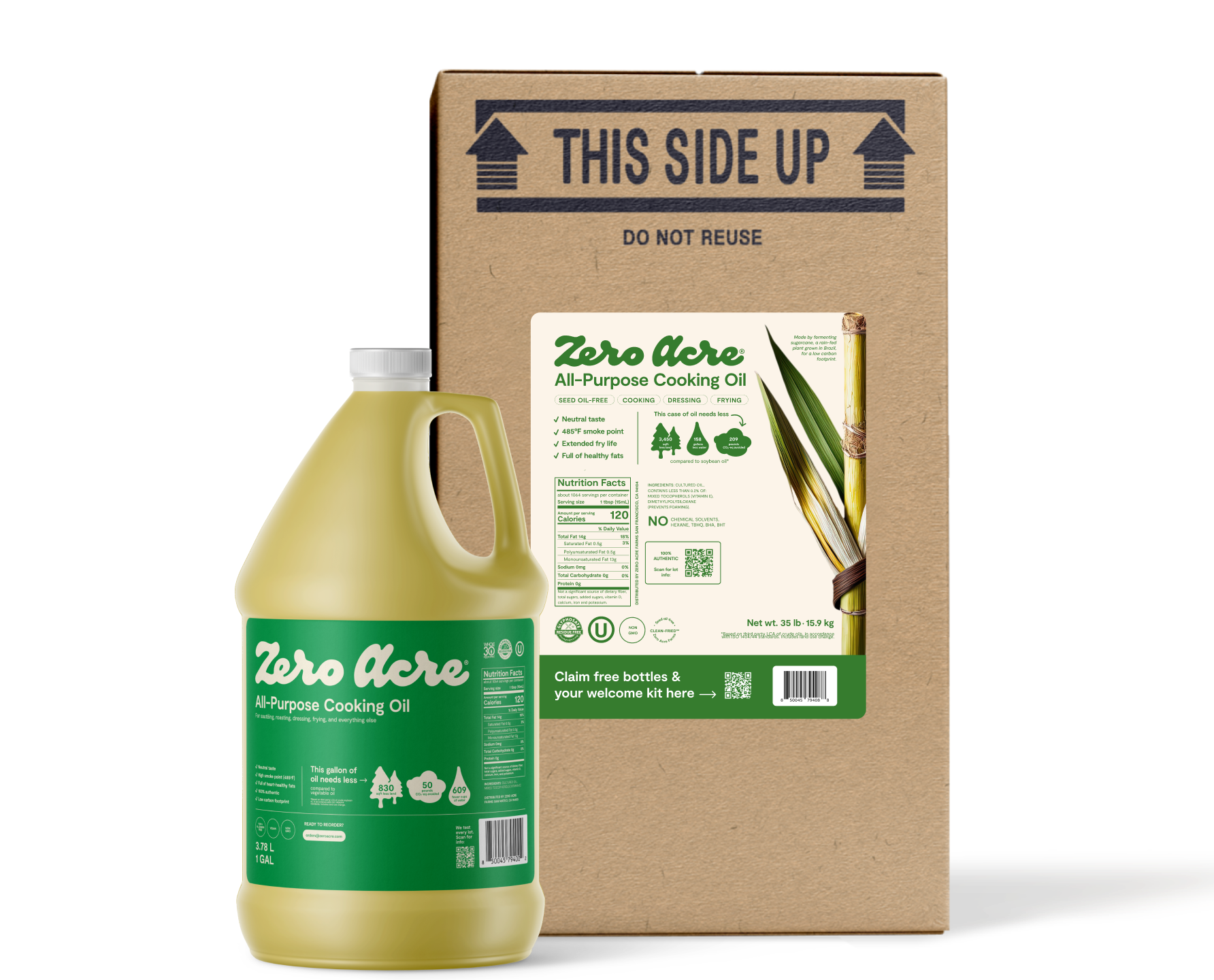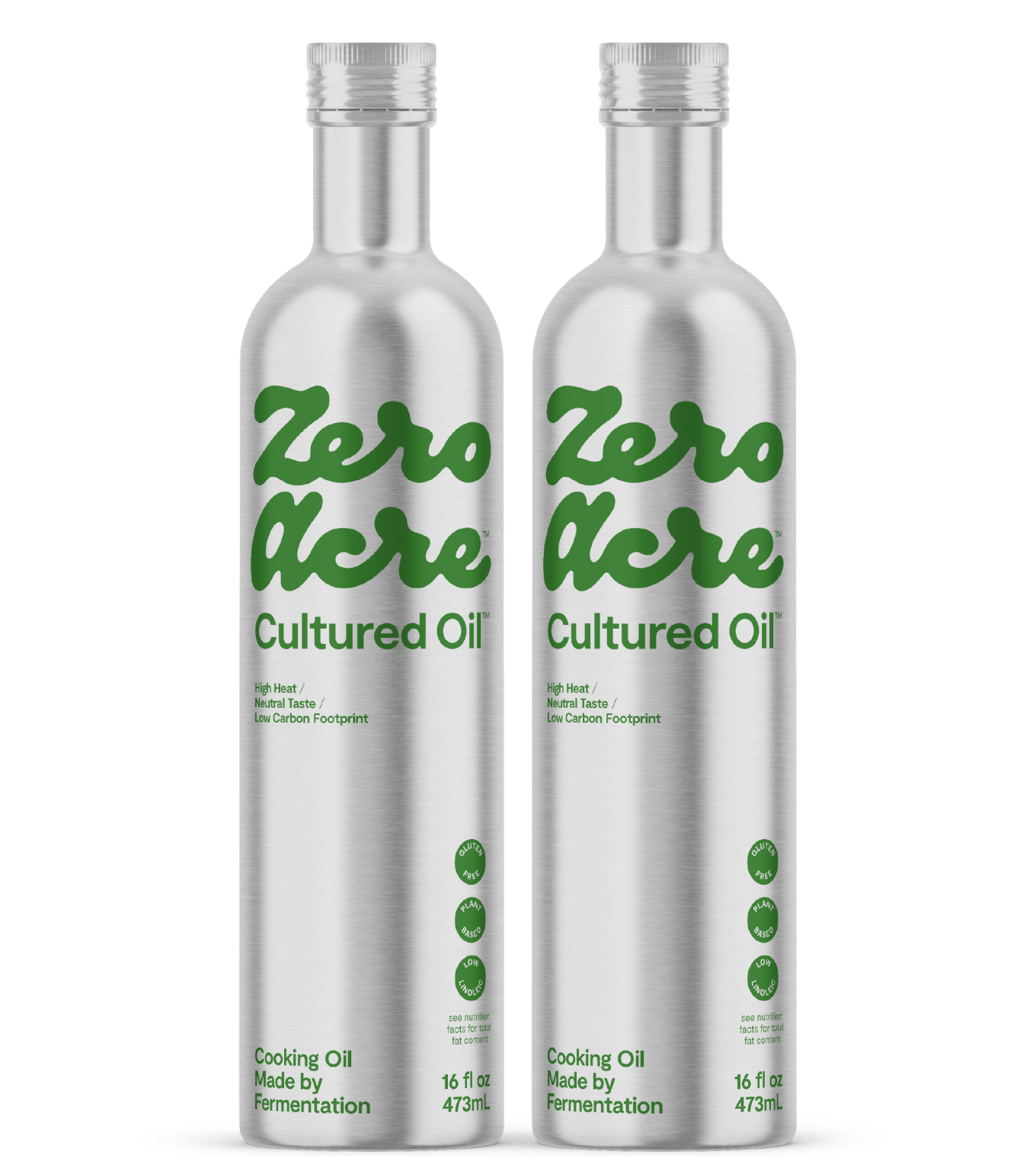WRITTEN BY: Corey Nelson
Article at a Glance
Historically, human diets contained balanced ratios of natural omega-6 and omega-3 fats. Modern diets usually include too much omega-6 and not enough omega-3s.
Seed oils high in omega-6 fatty acids, which are the most common cooking oils and also found in most restaurants and prepackaged foods, are linked with skin problems like inflammation, skin aging, acne, melanoma, and more.
Reducing your omega-6 linoleic acid intake by avoiding vegetable oils derived from seeds is vital for achieving a balanced ratio of omega-6 to omega-3 for healthy skin.
People with skin problems can also consume more omega-3 fatty acids to help reduce skin inflammation and improve skin barrier function, but cutting omega-6 intake is crucial.
Introduction
Healthy skin is about more than just beauty. Although appearance is one major reason people care about skin, skin problems can significantly impact your quality of life and overall health.
Millions of cosmetic products promise smoother, clearer, calmer, skin — but caring for your skin goes beyond what you put on it externally. In fact, evidence suggests that your diet is a much bigger factor in overall skin health and anti-aging.
Human diets have changed dramatically over the past century, which has led to higher rates of skin issues ranging from acne to skin cancer [*]. Along with higher intakes of sugar and ultra-processed foods, we're also eating more inflammatory omega-6 fats in the form of seed oils than ever before.
In this article, you'll learn about the relationship between dietary fats and skin health, which foods to eat, and what to avoid for healthier skin. Let's dive in.
Omega-6 Fats and Skin Health
Many dietary factors can affect your skin health for better or worse, including your intake of antioxidant-rich fruits and vegetables, refined sugars, ultra-processed foods, and dietary fats (which are made up of individual fatty acids).
Most people understand that eating too much junk food (and not enough fresh, whole foods) can adversely affect your health. But it's less common knowledge that vegetable oils high in omega-6 fatty acids may be responsible for problems like inflammation, obesity, heart disease, and more. And this is more of a problem than ever as seed oils are the most common cooking oils used in homes, restaurants, and in many packaged foods across the world.
Until recently, most people throughout history ate plenty of anti-inflammatory omega-3 fats from whole food sources like seafood. They also ate far lower amounts of refined omega-6 fats than most people consume today. Modern diets typically include a 15-to-1 ratio of omega-6 to omega-3 fats, which appears to lead to chronic inflammation in the skin and other organs [*].
Common high omega-6 fats like soybean oil, sunflower oil, and corn oil are implicated in chronic skin conditions including atopic dermatitis (eczema), psoriasis, acne, and hidradenitis suppurativa [*].
For example, researchers have found that some populations had little or no acne historically, including Canadian Inuit, South African Zulus, Japanese Okinawans, the Ache of Paraguay, and Kitavan Islanders from Papua New Guinea. And the same populations began to develop much higher rates of acne when they adopted Western diets high in seed oils [*].
For people with skin problems like psoriasis, eczema, acne, skin ulcers, or risk of skin cancer, strong evidence also suggests that consuming more omega-3 fatty acids may help reduce skin inflammation and improve skin barrier function [*].
However, research shows that reducing your omega-6 linoleic acid intake by avoiding seed oils is important in achieving a balanced ratio of omega-3 to omega-6 for healthy skin.
Consuming too much omega-6 doesn’t just throw off fatty acid ratios — it also depletes your tissue omega-3 levels, and some research finds no health benefit to adding omega-3 fats without reducing your omega-6 intake [*,*].
According to a 2018 peer-reviewed paper, there is also "evidence that a high omega-6 fatty acid diet inhibits the anti-inflammatory and inflammation-resolving effect of the omega-3 fatty acids" [*].

Inflammation and Acne
Acne vulgaris is an inflammatory skin condition with several factors involved. For acne to occur, your body first overproduces sebum (a sticky, oily substance made by the sebaceous glands of your skin), which then gets colonized by Propionibacterium acnes, a strain of bacteria [*].
The acne-causing bacteria changes your skin's balance and the normal functioning of hair follicles, resulting in inflammation and acne lesions [*].
Acne doesn't result from a single cause but rather is related to your genetic makeup, stress, hormone levels, immune functioning, general inflammation in your body, and diet [*].
Scientists have found that some types of food do correlate with breakouts in people who are already predisposed [*]. This is likely due to the fact that your diet can affect your immune system, hormones, and inflammation levels. On the flipside, other foods can reduce the likelihood of pimples [*].
The omega-6 fats from seed oils, typically found in fried foods and packaged foods, increase inflammatory compounds in your body, which contribute to the formation of acne [*].
In contrast, evidence suggests omega-3 fatty acids found in seafood can actually liquefy sebum (making it less likely to clog pores and cause blackheads and pimples) as well as increase the skin's resilience to bacteria [*].
As we covered already, it's important to achieve a healthy balance of omega fats by increasing your omega-3 levels and reducing your omega-6 levels [*]. Eating more omega-3s without also lowering omega-6 fats simply isn’t practical and may not work very well [*,*,*].
Based on today’s levels of omega-6 consumption, you’d have to eat salmon and sardines at every meal to get enough omega-3 to achieve anything close to a 1:1 ratio. Instead of embracing an all-sardines diet, it’s more practical to significantly decrease your consumption of omega-6 and only slightly increase your consumption of omega-3.
In a 1961 study of over 1,000 adolescents, participants who consumed large amounts of omega-3-rich fish and seafood had less oily skin and fewer acne lesions, including blackheads, papules, and pustules [*]. More recent studies have also replicated similar results and found that increasing omega-3 intake may be even more effective for patients with moderate or severe acne [*].
A separate 2017 study of 31 acne patients and 21 control volunteers without acne found that patients with acne had lower serum levels of omega-3 fatty acids and higher omega-6 levels compared to controls [*].
Oxidative stress, a type of cellular damage associated with inflammation, is another important contributing factor in acne [*]. In tissues with high levels of oxidative stress, polyunsaturated omega-6 fats break down into toxic byproducts, which then cause further tissue damage [*].
In a 2005 peer-reviewed paper, researchers discovered that patients with acne had higher levels of malondialdehyde, a toxic aldehyde formed from the breakdown or oxidation of polyunsaturated fats, compared to controls [*]. A separate 2008 study also found that patients with severe acne had higher malondialdehyde levels compared to other acne patients and controls [*].
Eating excessive amounts of omega-6 linoleic acid is one reason malondialdehyde formation occurs [*]. Another way malondialdehyde can form is during cooking. When foods high in omega-6 fats are heated, such as during deep frying, malondialdehyde and other toxic compounds are produced [*].
The effects of consuming foods high in malondialdehyde are reflected in statistics from two studies on the role of diet in acne:
In a 2021 study of 2,476 participants, consuming oily and fried food at least 3 times per week was associated with an 84% increase in the risk of worsened acne severity [*].
And in a 2010 study of 783 acne patients and 502 control subjects, intakes of junk food and fried chicken were significantly higher in the acne group[*].
Along with removing seed oils from your diet for healthier skin, you may be able to avoid the acne-causing effects of deep-fried restaurant foods by frying foods at home, with oils lower in omega-6 fatty acids.
Sun Damage and Melanoma
Melanoma, the deadliest form of skin cancer, is associated with excessive UV (ultraviolet) light exposure that results in sunburn and damage to skin cells [*]. However, melanoma rates increased during the 20th century, even as people used more sunscreen and spent less time outside in direct sunlight than ever before [*].
In the 1950s, a diagnosis of invasive melanoma was rare: only 1.9 patient cases occurred per 100,000 men and 2.6 cases per 100,000 women [*]. But between 1950 and 2007, the rates rose more than 17-fold in men (increasing to 33.5 cases per 100,000) and more than nine-fold in women (to 25.3 per 100,000) [*].
According to population-wide observational data, the increasing incidence of melanoma (and other cancers, including breast cancer, prostate cancer, lung cancer, and bladder cancer) starting in the middle of the 20th century reflects increasing intakes of omega-6 linoleic acid [*].
One way linoleic acid may contribute to cancer formation or growth is by increasing cellular inflammation, which “predisposes to the development of cancer and promotes all stages of tumorigenesis” (tumor formation and growth) [*].
As a result, several cancer researchers have concluded that increasing omega-6 linoleic acid intakes better explain the phenomenon of rising melanoma rates than increases in sun exposure over the same period [*,*,*,*].
And according to results from the 1960s Los Angeles Veterans study conducted by the American Heart Association, a trial including over 800 veterans, the men receiving diets high in linoleic acid (15% of daily calories from linoleic acid versus 4% in the control group) were 82% more likely to die of cancer [*].
The average person today eats 6-10% of their calories from omega-6 linoleic acid, or approximately 13-22 grams of linoleic acid on a 2,000 calorie-per-day diet, which come mainly from soybean and sunflower oils used for cooking and as ingredients in ultra-processed foods[*,*].
The historical human intake of omega-6 linoleic acid required to thrive is a mere 1-2% of daily calories, or approximately 2-4.5 grams per day [*]. It's extremely easy to obtain this amount of omega-6 fats from healthy whole foods like nuts, grains, meat, eggs, and dairy.
In a large 2018 epidemiological study of fat intake and the risk of skin cancer in U.S. adults, higher omega-6 polyunsaturated fatty acid (PUFA) intake was associated with an 18-23% higher risk of squamous cell carcinoma (SCC), a 4-9% increased risk of basal cell carcinoma (BCC), and a 15-17% higher risk of melanoma [*].
According to a 2020 review of 38 studies, along with reducing your omega-6 intake, eating more seafood high in omega-3s can also reduce skin inflammation, provide photoprotection against UV light (similar to how sunscreen works to prevent sunburn), and appears to lower the risk of skin cancer [*].
Skin Aging
Some skin aging is unavoidable due to genetically programmed cell aging, but factors like UV radiation, pollution, and stress accelerate the breakdown of skin cell structures, contributing to wrinkles and the loss of elasticity [*]. Oxidative stress, which is cellular damage caused by free radicals, is a major contributing factor.
The accumulation of radical oxidative species (ROS), also called free radicals, causes DNA damage, skin inflammation, lower levels of antioxidants, and reduced collagen levels in the skin [*].
Younger skin can regenerate from oxidative stress [*]. But over time, as damage accumulates and the skin's ability to heal is diminished, skin aging results [*,*].
As we covered in the previous section, UV radiation damages skin through oxidative stress [*]. Consuming too much dietary omega-6 fat increases oxidative stress and inflammation in response to sunlight, contributing to more skin damage and higher rates of skin cancer [*].
Diets high in omega-6 fats also increase the production of aldehydes like malondialdehyde and 4HNE (4-hydroxynonenal), which contribute to skin aging [*,*,*,*,*].
Foods deep-fried in seed oils are also high in harmful, inflammatory byproducts like malondialdehyde and 4HNE, which may accelerate skin aging [*,**].
To reduce inflammation and skin aging, you can reduce your omega-6 intake dramatically by avoiding seed oils. Increasing your consumption of anti-inflammatory omega-3 can also help.
In a 2013 study of over 2,900 subjects aged 45-60, researchers found that a higher intake of omega-3 fats was associated with less sun-related aging, and those with the highest levels of sun damage had the lowest omega-3 intake levels [*].
Skin Barrier and Healing
Your skin barrier or stratum corneum is an important part of your immune system. This tough, outermost layer of skin protects against external threats and helps your skin stay smooth and moisturized [*]. Skin barrier breakdown results in itchy, dry, cracked skin and sometimes causes conditions like eczema.
Omega-6 fats and omega-3 fats are both required for proper skin barrier functioning. In conditions like eczema, patients often have skin deficiencies of these essential fatty acids, even though, in some cases, the rest of their bodies aren't deficient [*].
Some research has shown benefits to applying topical omega-6 oils to restore barrier function and hydrate skin, while other studies suggest that oral omega-3 fats can also help for these purposes [*].
In a 2020 mouse study, researchers discovered that providing rats with nutrition containing a 4-to-1 or 1-to-1 ratio of omega-6 to omega-3 fats reduced inflammation and decreased eczema-like symptoms [*]. In comparison, most people today eat a 15-to-1 or higher ratio of omega-6 to omega-3 fats [*].
And according to the authors of a 2017 rat study, consuming a high ratio of omega-6 to omega-3 fats may impair wound healing, but achieving a more balanced intake by reducing omega-6 fats and increasing omega-3s could improve wound healing [*].
Answers to Common Questions About Vegetable Oil and Skin Health
The world of dietary fats is complex. Here's what to keep in mind about vegetable oils, omega fatty acids, skin health, and more.
What Oils Should You Avoid?
Consuming seed oils high in omega-6 fats may contribute to inflammation and chronic disease, including inflammatory skin problems [*]. Avoiding seed oils like soybean, sunflower, corn, peanut, safflower, cottonseed, and canola oil is an easy way to reduce your omega-6 intake and decrease skin inflammation.
What Oils Are Not Good for Your Face?
Seed oils high in omega-6 may contribute to skin aging and inflammatory problems like acne when eaten regularly. On the other hand, research shows that some vegetable oils like olive, almond, and avocado oil may cause irritation when applied to the skin topically [*].
Olive oil contains squalene and polyphenols, which likely contribute to its irritating topical effects [*]. However, research suggests dietary intake of monounsaturated fats oils like Zero Acre oil can support metabolic health and skin health [*].
Does Omega-6 Help With Acne?
There's no good evidence that dietary omega-6 fats help with acne or pimples. In fact, some scientists make the case that consuming too much omega-6 contributes to acne severity by increasing inflammation and reducing tissue levels of anti-inflammatory omega-3 fats [*].
Is Omega-6 Linoleic Acid Good or Bad for Skin?
Seed oils high in omega-6 linoleic acid appear to contribute to skin inflammation, acne, and other skin problems when eaten regularly. However, when applied topically, there's some evidence that high-linoleic oils like evening primrose, safflower, sunflower, or hemp oil might hydrate skin and support barrier function [*].
Interestingly, the linoleic acid contained in these oils might not be responsible for their potential benefits. According to a 2020 peer-reviewed paper on botanical oils, other components of oils, such as antioxidants and micronutrients, might be the active ingredients when used topically [*].
Will Vegetable Oil Clog Your Pores?
Eating vegetable oils high in omega-6 doesn't appear to increase sebum production but can increase inflammation, which may lead to pimples [*]. When applied topically, any vegetable oil could potentially cause comedones (blackheads) to form. In particular, olive oil is high in squalene, which can cause blackheads when applied to skin [*,*].
Which Is Better, Omega-3 or 6?
We require both omega-3 and omega-6 fats from our diets because our bodies can't produce them. However, modern diets are usually low in omega-3 and very high in omega-6, which leads to inflammation [*]. Reducing your omega-6 intake and consuming adequate amounts of omega-3 fats may decrease inflammation and improve skin health [*].
Should We Avoid Omega-6?
Most whole foods contain low levels of omega-6 fats, so it’s not necessary or realistic to avoid all omega-6 sources. That said, cutting out high-omega-6 seed oils is the best way to avoid overconsumption of these inflammatory fats. You'll still get enough from nuts, grains, meat, and eggs.
What Cooking Oil Is Best for Skin?
To reduce inflammation and support healthy skin, replace seed oils with vegetable oil substitutes that are low in omega-6 fats for all your recipes. Some of the best options for this purpose include Zero Acre oil, avocado oil, olive oil, and coconut oil.
The Takeaway
Your diet can have a significant impact on your skin health through its effects on inflammation, oxidative stress, and hormones.
The well-known advice of limiting your intake of sugar and junk food and focusing on plenty of real, whole foods for healthier skin still holds true.
Along with a healthy, balanced diet, it's also vital to limit inflammation by reducing your omega-6 intake from vegetable oils like soybean, sunflower, and corn oil. You can further improve your skin health by getting plenty of omega-3 fats from wild-caught seafood.
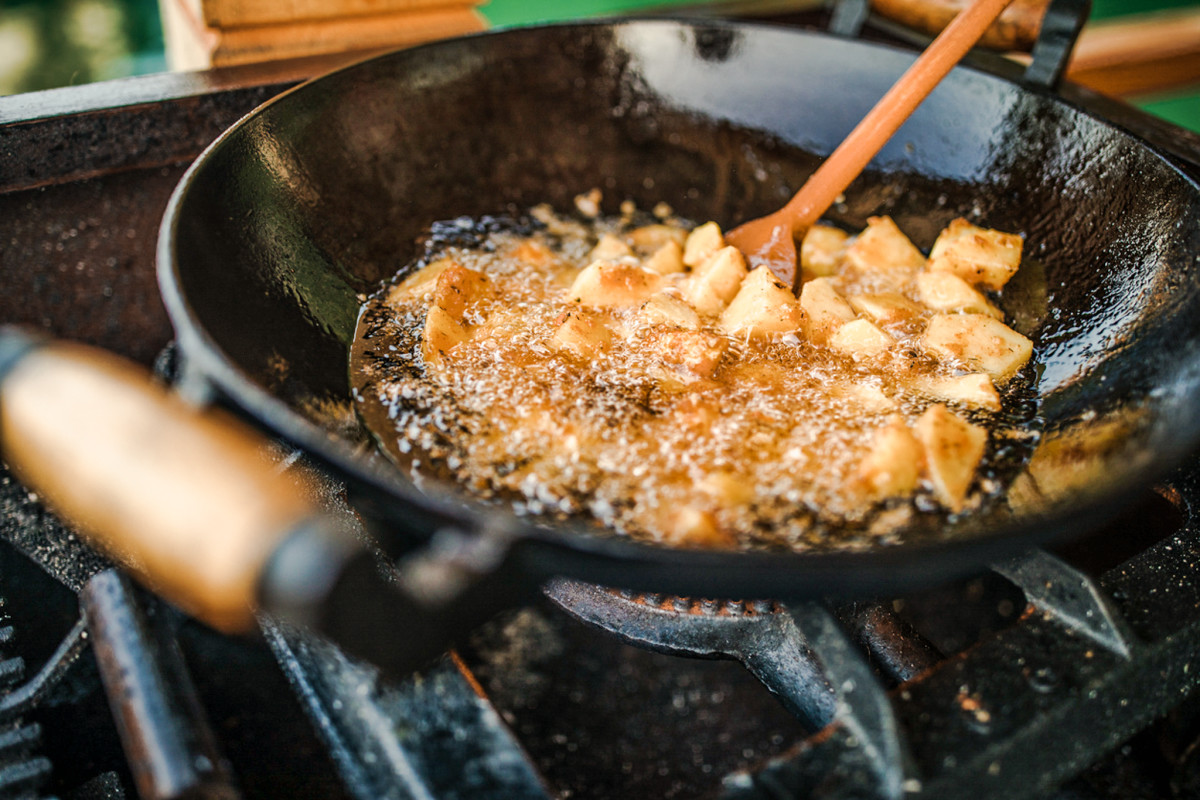
Are Seed Oils Toxic? The Latest Research Suggests Yes
Seed oils never underwent safety testing for premarket approval. Here, we examine the disturbing toxicity and safety data that have come to light recently.
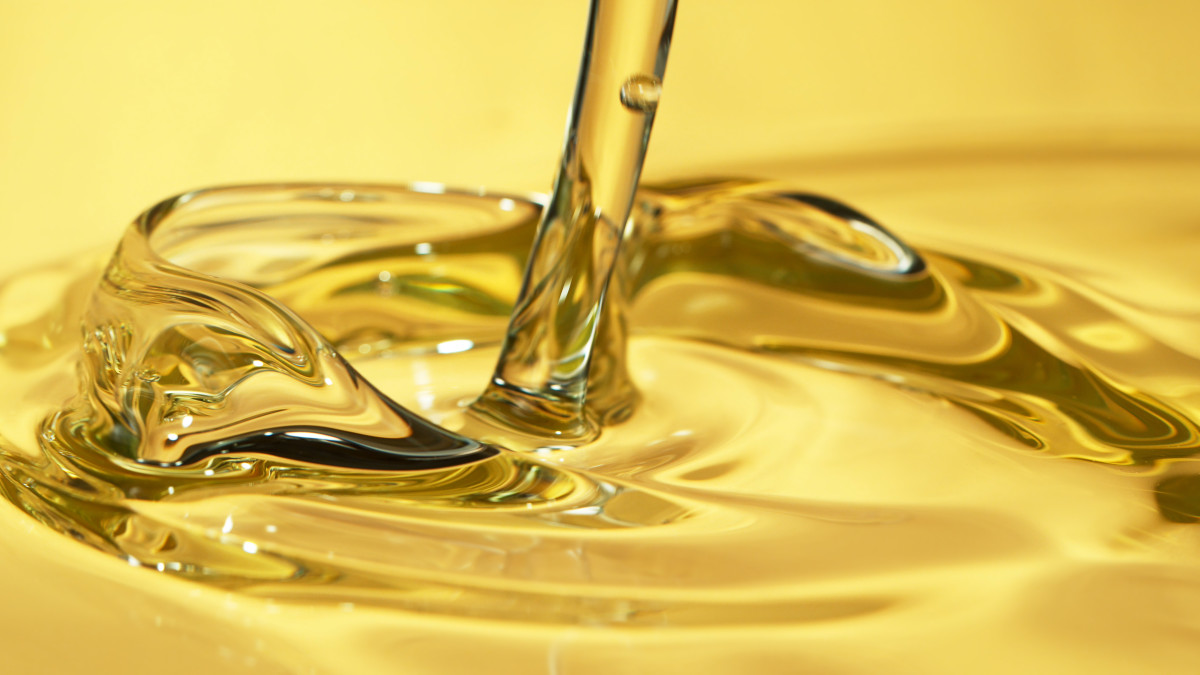
What Are Seed Oils And Should You Avoid Them?
Seed oils are a rich source of linoleic acid, an omega-6 fatty acid linked to heart disease, diabetes, autoimmunity, neurological disease, and more.

